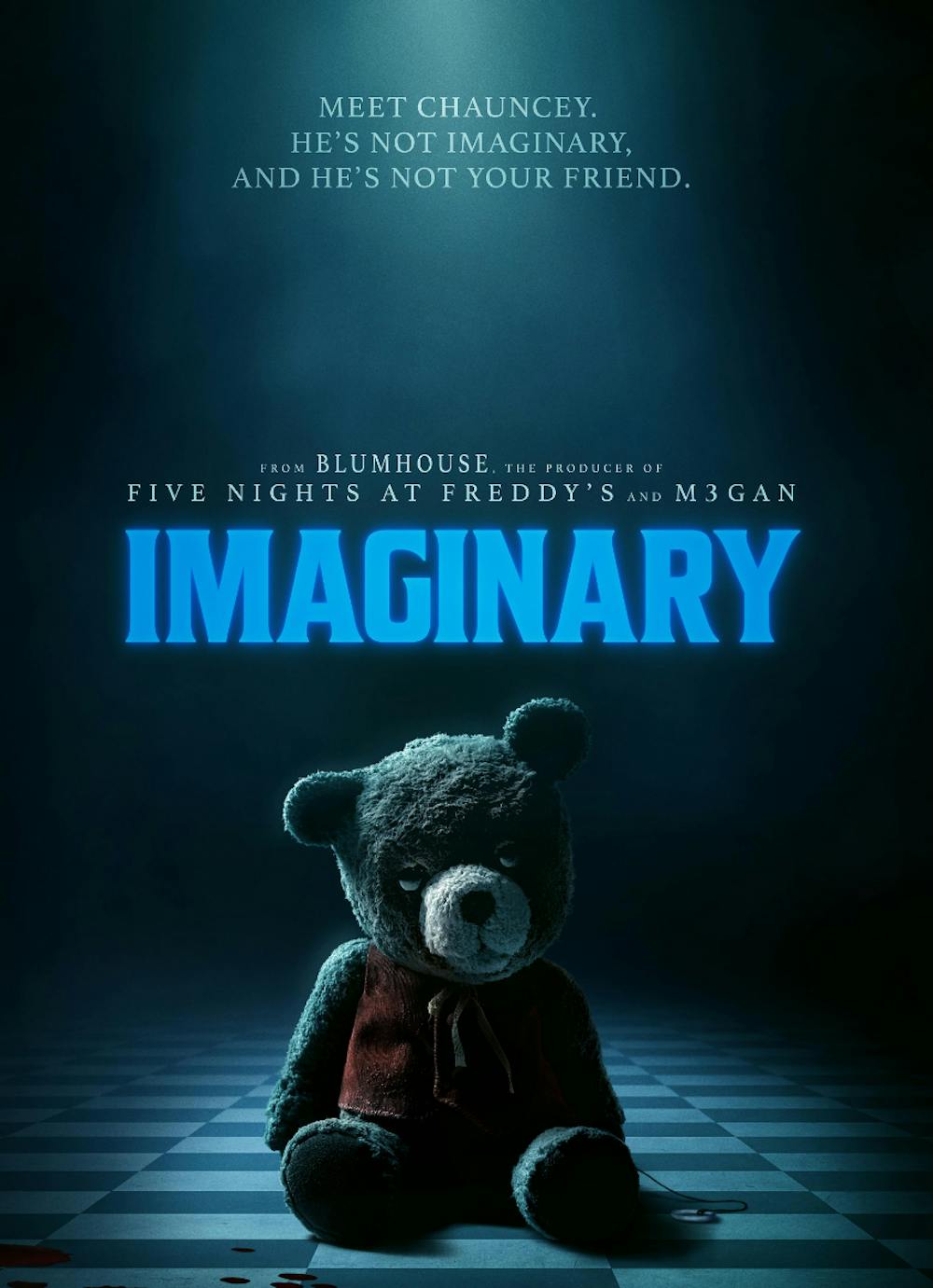By Joshua Hudes
Correspondent
Made on a budget of only $13 million, starring a slew of smaller character actors and branding itself as the next interrogation into the horror genre, “Imaginary” epitomizes the successful business model which Blumhouse Productions, along with its spearhead Jason Blum, have kept alive.
This model, which dictates the specific variety of films the production company chooses to funnel its money into, is still to this day at the very focal point of Blum’s producing philosophy.
While a plethora of filmmakers and artists such as James Wan, Leigh Whannell and David Gordon Green have set up shop for many of their films at Blumhouse, a huge segment of the films crafted under their name are also fresh creative voices. One of those is the filmmaker behind “Imaginary” named Jeff Wadlow, whose latest film arrived in theaters on March 8. Having been introduced to Blumhouse after a few years directing feature-length films, Wadlow made “Truth or Dare” and “Fantasy Island” back in 2018 and 2020, respectively. Both of those horror films did receive a certain amount of critical backlash but ultimately were box-office hits. Both as well were horror films depicting nightmarish scenarios that Wadlow clearly has a fondness for in his cinema.
“Imaginary” continues that streak to moderately diminishing results. The film concerns an outwardly levelheaded mother named Jessica parenting two stepdaughters undergoing their own adolescent progressions. Jessica is played by character actor DeWanda Wise, and the stepdaughters, Alice and Taylor, are played by Pyper Braun and Taegen Burns, respectively.
The conflict of the film centers on Jessica moving her new family back into her childhood home where her old Teddy Bear named Chauncy scarily becomes the youngest stepdaughter Alice’s favorite toy. An obsessive relationship between her and the bear recalls memories of Jessica as a child also falling too far into her own imagination as a result of an unhealthy relationship with childhood trauma.
Only in this case, the imaginative space which each character fell into along with Chauncy is a tangible reality.
Unlike other Blumhouse productions, this film did fall into certain traps many of its type tend to lean into, such as an overly gray color palette, subtext becoming pieces of dialogue and a bit less conviction in the directing than I expected from Wadlow’s previous work.
The film started to feel more comfortable in its skin as it went on. It was paced decently, made adequate use of its budget despite a lack of divergence in its imaginary realms, and had a pretty nifty switch up of the conventional horror third act. Even the use of an animatronic costume for a gonzo version of the bear was quite inspired in this day and age of computer-generated imaging.
“Imaginary” felt like an exploration of the cyclical perpetuation of family trauma and social introversion through imagination, which does not do much exploring or much imagining of its own.
Even with this much lacking in the characters’ and filmmaker’s unconscious visions, there somehow lingers this intuitive feeling amongst viewers that a film such as this was crafted under similar circumstances to others of its type.
If one were to ask a common filmgoer what the correlations are between films such as “The Invisible Man” or “Insidious” and their producer, Blum, one could come to a plethora of conclusions. Both have robust genre thrills, a certain level of directorial flair while not going too experimental, and zero in on character instead of overt spectacle.
At the same time though, one element which might clue this common filmgoer in on what these films say about Blumhouse is that the casts within these films might not ring a bell to the majority of those who watch. Actors such as Elizabeth Moss and Patrick Wilson both portrayed the main characters in each of those films, even though some might not consider them to be A-list actors. They might lack star magnetism and box-office smashes which would land everyone in theaters based purely upon their name brand.
Blum, on the other hand, saw the potential for making a production company which housed filmmakers and writers who saw the raw talent of actors such as Moss and Wilson. At the same time, all of this could be done without a large budget.
While the extent to which the films produced under the Blumhouse label vary both in quality and in such radical creative liberties, Blum was clearly always onto something ubiquitous. He envisioned a company which could deliver unto the world an expansive slate of handsomely crafted films within the wide-ranging genres of horror and thriller which could chug forward despite occasional financial depletion. Having only made $14 million at the box-office within its first week out on a budget of $10-12 million, “Imaginary” does count as one such depletion.
A model such as this does invite grave risks with regards to the amount of freedom its creators are bestowed with. It sometimes works, sometimes does not, but Blumhouse perseveres nonetheless.







